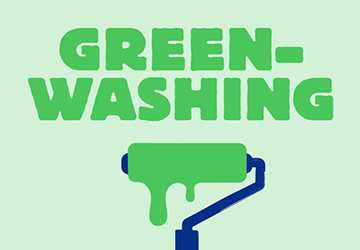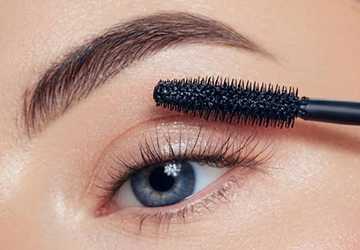Environmentally friendly beauty products have become increasingly popular in recent years, thanks to a growing awareness of human activity's impact on the natural environment.
However, these products are often confusing because not all companies that promote "green products" are honest.
Greenwashing leads consumers to believe a product is eco-friendly, even when this information is false or exaggerated.

Making informed decisions is essential to ensuring that the beauty industry makes and implements sustainable efforts.
This blog post looks at seven warning signs that indicate "greenwashing" in beauty products.
Knowing these signs will help you make decisions about your beauty treatments.
Why is it important to recognize "greenwashing"?
As the world moves toward a more environmentally friendly future, greenwashing in the beauty industry must be a cause for concern.
This misleading marketing deceives customers, hurts them, and discourages indeed environmentally conscious businesses.
Greenwashing occurs when a company endorses a specific product by making untrue or misleading claims about its environmental impact.
This is particularly appealing to customers because it makes them feel like they are making an eco-friendly decision, even though the product they purchase is not as eco-friendly as it appears.
By being aware of "greenwashing," consumers should be able to make the right decisions and even support companies that take sustainability seriously.
This, in turn, will lead to more companies adopting eco-friendly policies and processes, thus reducing the impact of beauty production.
7 Warning Signs of Greenwashing in Beauty Products
Now, let's explore seven ways to identify this misleading process in beauty products. Here are some signs to look out for.
When you notice these signs, you'll be better equipped to make better decisions for sustainable living.
Sign 1: Vague or Undefined Terms
The most effective form of greenwashing is using words like "natural," "eco," "green," etc. These words imply that proper definitions or specific standards are backing them.
However, if you want to be extremely careful, ensure it has special certifications like USDA Organic or Ecocert. Third-party certifications can better assess a product's sustainability.
Avoid products that use eco-friendly terms as slogans but don't explain their meaning; this is especially true for sustainable brands, who always provide detailed information about their ingredients, sources, and processing.
Sign 2: Lack of Transparency
Transparency in cosmetic brands and their products is essential to meet sustainable beauty needs.
Most greenwashing brands require more information about their product ingredients, where their raw materials come from, and how they are produced, making it difficult for consumers to verify the authenticity of their claims.
Sustainable brands are transparent in the information they provide, or rather, the information they provide is usually accurate. They include detailed lists of ingredients and indicate where they come from and how the manufacturing process affects the environment.
Therefore, if a brand is unclear or secretive about its activities, its packaging could be a sign of greenwashing. When choosing brands or organizations, look for those that do not hide their commitment to sustainability.
Sign 3: Misleading Labels and Images
These brands convey the impression of sustainability by labelling and presenting their products in a certain way. They may use green as a primary colour, represent nature, or use other symbols associated with environmental friendliness without necessarily providing evidence for this.
Despite these attractive features, there is much more to packaging than just that. It is also important to note that some products may use green hues and other natural depictions to convey a more eco-friendly appearance, but no substance is present.
However, the environmental benefits of a company's products and services should still be considered. Aesthetics will not attract authentic, sustainable brands; instead, focus on publishing facts.
Sign 4: Exaggeration
Another sign of a product being "greenwashed" is misleading headlines or exaggerated promises of a product's environmental benefits; this is where some brands may make very flowery claims about their sustainability but provide little to no evidence to back them up.
This principle fits in very well with the saying: "If something sounds too good to be true, it probably is." You can trust brands that claim to be the best by generalizing and providing enough evidence.

Consciously sustainable brands make practical claims that are backed by evidence. In most cases, they will have third-party recommendations or scientific evidence to support their claims.
It is always wise to compare a company's claims to the content of its products or the practices it follows.
Sign 5: Small green initiatives are overemphasized
Some brands may build their marketing strategy around small eco-friendly initiatives and fail to address other more important issues.
For example, a company may brag about its products' biodegradable packaging but use hazardous chemicals or buy products from companies that exploit workers.
To avoid falling for this greenwashing technique, look for brands with better sustainability policies. Sustainable,ble brands do not treat environmental protection as an extra but incorporate it into their business strategy.
Therefore, brands must focus on something other than minor aspects of environmental consciousness and ignore the big picture. Regardless, sustainability must be embedded throughout the brand organization.
Sign 6: Using unsustainable ingredients
Ingredients that are not sustainably sourced often contradict the brand's environmentally friendly image.
Greenwashing brands may sell products with labels and advertising that portray them as environmentally friendly; however, these products may contain hazardous chemicals or be made from materials that are not sustainably sourced.
To avoid this trap, focus on the elements used when buying beauty products. Avoid products that contain notorious chemicals, including parabens, sulfates, and phthalates, which harm the environment and your health.
Instead, it would help if you looked for brands that use only sustainable and natural products. Authentic, sustainable brands don't hide information about the ingredients used; most have certificates to support their innovations.
Sign 7: No Third-Party Certification
Since third-party certification is essential to convince buyers that a company's products and services are sustainable, governments and companies must invest more effort in their development.
Greenwashing brands have no reliable endorsements to back up their claims and often make them up themselves.
Consider USDA Organic, Fair Trade, and Ecocert to support eco-friendly products and goods.
These certifications are issued by third parties to confirm that the brand is committed to protecting the environment.
Another problem is when brands need third-party verification evidence to make sustainability claims. Use certifications as a benchmark for serious sustainability efforts.
Start Making Intelligent Beauty Decisions Today
With these seven greenwashing warning signs, you can now make more thoughtful decisions about which beauty products to use on your face, hair, or body. So don't wait until it's too late to apply this knowledge in real life – start Today!
Whenever you choose a truly sustainable product over one that "looks green, " you're helping companies work to improve the planet.
Join the army of conscious customers who are already improving the world of cosmetics.
Feel the difference between knowing and making the right choices for your beauty. Let's embrace sustainable beauty Today!





